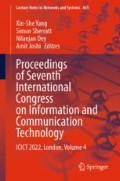Abstract
We quantify the practical limits for sorting reals in a linear time. This possibility is assured under assumption on the distribution of the sorting key, mainly the independence and identity of the distribution. Here, we give a more general criteria easily applicable in practice. We also show that the algorithm is applicable for data that do not fulfill criteria for linear time complexity but even that the computation is faster than the system quicksort.
Access this chapter
Tax calculation will be finalised at checkout
Purchases are for personal use only
References
Cormen TH, Leiserson CE, Rivest RL, Stein C (2001) Introduction to algorithms (Chap. 8.2 Counting Sort, 2nd ed). MIT Press and McGraw-Hill, pp 168–170. ISBN 0-262-03293-7
Fernandez M, Williams S (2010) Closed-form expression for the Poisson-Binomial probability density function. IEEE Trans Aerospace Electron Syst 46(2):803–817. Bibcode:2010ITAES..46..803F. https://doi.org/10.1109/TAES.2010.5461658. Eventually available at [https://en.wikipedia.org/wiki/Poisson_binomial_distribution]
Hoare CAR (1962) Quicksort. Comput J 5(1):10–16. Available at https://doi.org/10.1093/comjnl/5.1.10
Jiřina M (2020) Bounds on complexity when sorting reals. Int J Circuits Syst Sign Process 14(39):276–281
Jiřina M (2020) Customary behavior of sorting reals with linear time complexity. In: Proceedings of 2nd international conference on mathematics and computers in science and engineering (MACISE 2020). IEEE, Piscataway, pp 268–271. ISBN 978-1-7281-6695-7. Available at: https://doi.org/10.1109/MACISE49704.2020.00056
Seward HH (1954) Information sorting in the application of electronic digital computers to business operations. Report No. r-232, Digital Computer Laboratory, MIT, Cambridge, MA
Stanica P (2001) Good lower and upper bounds on binomial coefficients. J Inequalities Pure Appl Math 2(3):5p. Eventually available at https://en.wikipedia.org/wiki/Binomial_coefficient
Quicksort. Available at http://www.algolist.net/Algorithms/Sorting/Quicksort
Acknowledgements
The work was supported by the Czech Ministry of Education, Youth and Sports in project No. LM2015068 Cooperation on experiments at the Fermi National Laboratory, USA.
Author information
Authors and Affiliations
Corresponding author
Editor information
Editors and Affiliations
Appendix: The Algorithm
Appendix: The Algorithm

Rights and permissions
Copyright information
© 2023 The Author(s), under exclusive license to Springer Nature Singapore Pte Ltd.
About this paper
Cite this paper
Jiřina, M. (2023). A Criterion for Sorting Reals in a Linear Time. In: Yang, XS., Sherratt, S., Dey, N., Joshi, A. (eds) Proceedings of Seventh International Congress on Information and Communication Technology. Lecture Notes in Networks and Systems, vol 465. Springer, Singapore. https://doi.org/10.1007/978-981-19-2397-5_41
Download citation
DOI: https://doi.org/10.1007/978-981-19-2397-5_41
Published:
Publisher Name: Springer, Singapore
Print ISBN: 978-981-19-2396-8
Online ISBN: 978-981-19-2397-5
eBook Packages: EngineeringEngineering (R0)

